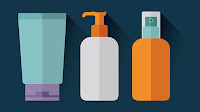THE TRUTH ABOUT ANIMAL TESTING
Many cosmetics on the market today boast that they are “cruelty free”, however, in this month’s blog, I will attempt to bring an insight into this very important topic for the industry and how associated claims can be misleading. Read on….and form your own opinion.
Some history on the ban on animal testing for cosmetics :
2004
The ban on animal testing in the European Union was first introduced on 11thSeptember 2004, when it became forbidden for manufacturers to test finished cosmetic productson animals within the EU.
2009
In March 2009, a ban was also introduced in the EU for testing cosmetic ingredientson animals.
At the same time, in 2009, a ban on the sale of cosmeticstested on animals was also introduced, with the exception of some specific tests (repeated-dose toxicity, reproductive toxicity, and toxicokinetics). These tests were still allowed to be performed on animals during the phasing out period while research was pursued in order to validate new alternative methods using cell cultures and other non-animal techniques.
2013
On 11thMarch 2013, it was all over, whether or notalternative methods had been found and validated in the meantime. This ultimate ban, known as the “marketing ban” put an end to the sale of cosmetics in the EU that had been tested on animals (finished products or ingredients) anywhere in the world. It was, of course, a huge step in the right direction for animal welfare and soon became a worldwide example.
In the European Union, we can safely say that cosmetic products and their ingredients have no longer been tested on animals in the EU for the purposes of use in cosmetics, for at least 6 years.
Are cosmetics tested on animals in other parts of the world ?
European legislation on cosmetics is upheld as a world-wide flagship standard. Many other countries across the world are now falling into line and have also banned animal testing for cosmetics, including Turkey, India, Taiwan, New Zealand….to name but a few, while phasing out is ongoing in many others such as Russia, Argentina, Chile, Brazil, Canada, and the USA. Recently Australia also passed a bill to ban animal testing on cosmetics and China is slowly moving in the same direction, although animal testing is still required for all imported cosmetics.
N.B. On 3 May 2018, the European Parliament voted by a vast majority to adopt a resolution calling for a global ban on animal testing for cosmetics products before 2023. Among other motions, the resolution includes the drafting of an international convention against the testing of animals for cosmetics within the United Nations framework.
Are animals still used for other testing purposes?
Of course, animal testing is still carried out worldwide on pharmaceuticals, before human clinical trials can take place. Furthermore, to give a fair picture, it should also be mentioned that animal testing is not prohibited on chemical substances for reasons such as environmental toxicity and other human health hazards, in particular in order to satisfy compliance with the REACH Regulation* on chemicals within the EU. The testing is carried out on substances that are destined for use in many fields other than cosmetics. However, it is not impossible to imagine that the same substance may be used in different applications, includingcosmetics. There is therefore still a dilemma here, and some may even call it a loophole…
We can, however, be sure of the following : IF animal testing is still performed on chemicals in the EU, it is never for the purposeof use in cosmetics and the data generated (wherever the tests are performed) cannot be used by cosmetics manufacturers to justify the use of the substance. The testing ban, for cosmetics, is therefore strictly maintained.
More work still needs to be done to continue to validate alternative methods in order to reduce the number of tests that are carried out worldwide for whatever the reason on animals today. We are moving in the right direction, but it will take time and the cosmetics industry has clearly been a first-class pioneer and leader in this field.
What about the “cruelty free” claims?
Claiming “cruelty free” on cosmetics is in conflict with COMMISSION REGULATION (EU) No 655/2013 of 10 July 2013 which lays down common criteria for the justification of claims used in relation to cosmetic products. This type of claim comes under the first of the 6 common criteria applied to claims associated with cosmetics, namely “legal compliance”. For example, manufacturers are not allowed to state :
‘this product complies with provisions of the EU cosmetics legislation’
since all products placed on the EU market must comply! Therefore, in the same manner, claiming “cruelty free” is not in line with current EU legislation on claims associated with cosmetics, since ALL cosmetics are in fact “cruelty free”, and have been since at least 2013.
We could also argue that is does not comply with the 5thcriterion, ‘fairness’, since a product that boasts a “cruelty free” label implies that the product next to it on the shelf, without the same claim, has made use of animal testing. This is of course twisting the truth…
Codibel’s position
As a responsible manufacturer, we at Codibel support all measures taken to improve animal welfare worldwide and have never performed nor mandated animal testing of any sort. We also maintain full cooperation with competent authorities regarding the regulatory status of the ingredients we use in order to demonstrate full compliance with the EU Cosmetics Regulation regarding animal testing.
And to conclude, we also hope that this month’s blog has shed some light on the complex subject of animal testing and helped you to form your own opinion on the ‘cruelty free’ claims you still find on some cosmetic products in the EU.



Comments
Post a Comment